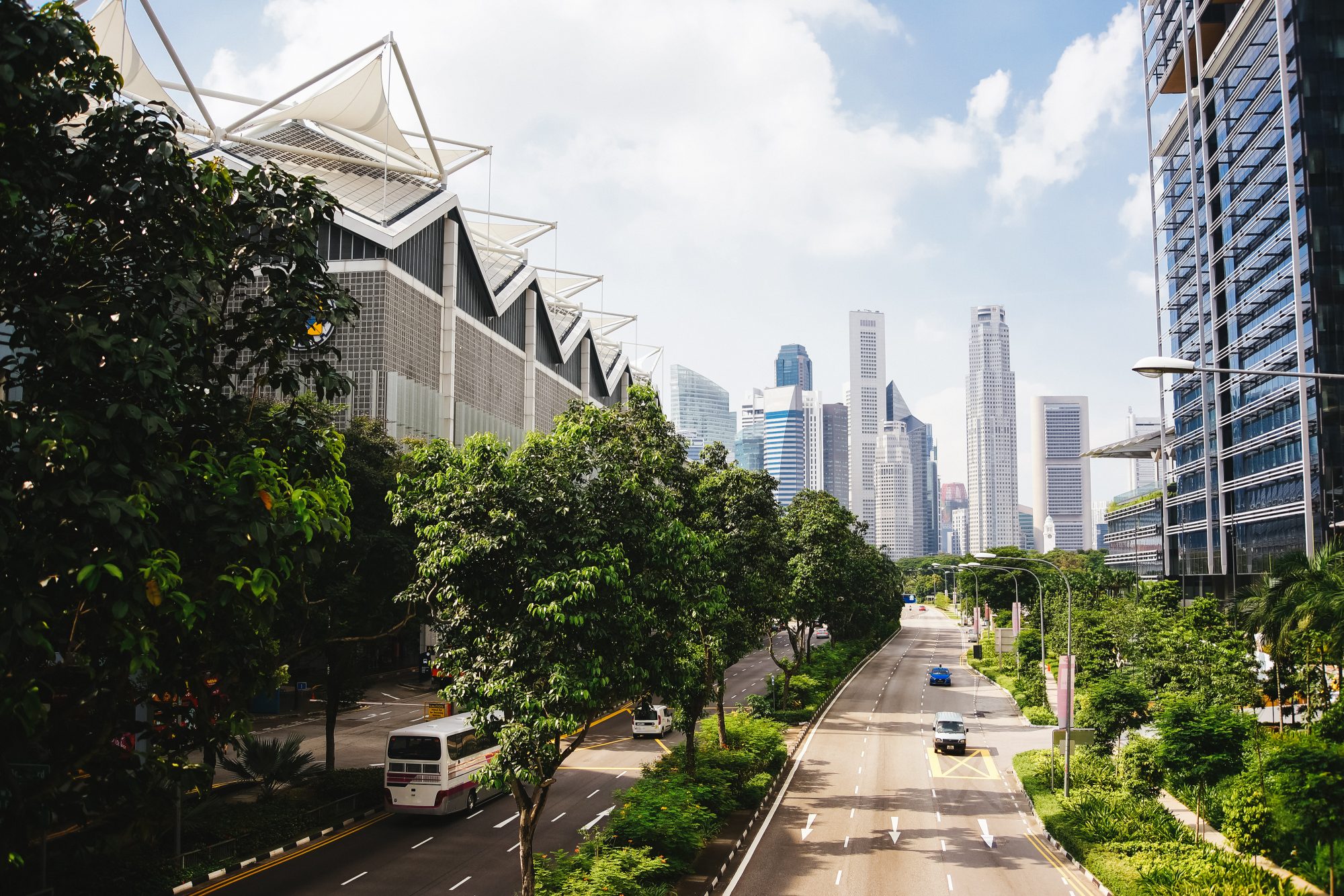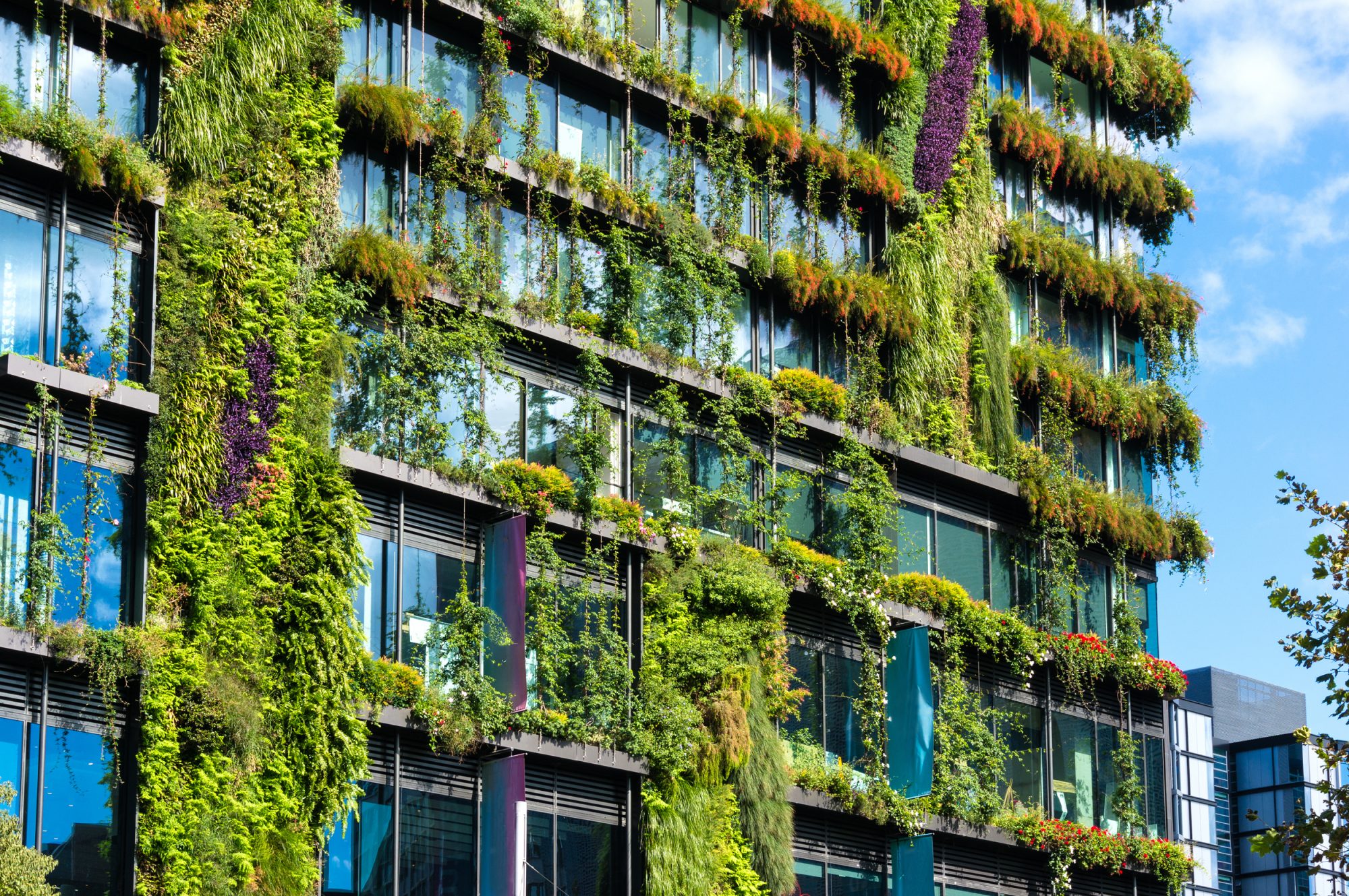Cities’ new nature – how the inclusion of nature enhances our lives
Cities are often perceived as direct antagonism to nature. But is this necessarily the case? Initiatives coming from urban hubs all around the world try to find ways that combine town life with a healthy relationship to our environment.
Green rooftops, vertical gardens spanning whole high-rise buildings, bridges carrying parks instead of motorways – all these are possible architectural concepts that can alter urban life in an enormously beneficial way. Cities shall no more be opposed to nature but incorporate it in order to revive the interaction between humanity and environment.
When hearing the word ecosystem, we generally think of landscapes like the rainforest, lakes and ponds or even deserts, with their specific flora and fauna interacting. We tend to forget, however, that cities can just as well be classified as ecosystems: The ongoing interactions between living beings, plants, buildings and climate can be studied in a very similar way and yield data that is reasonably used for urban planning and socioeconomic policies. Whereas cities used to grow rather randomly and chaotically in the historic perspective, urban planning presents a new paradigm for modern societal coexistence. Integrating nature into such concepts constitutes the next revolutionary step and provides great benefits and opportunities.
Stressed woman

Recent studies demonstrate the actual harm urban spaces inflict upon their inhabitants. Their velocity, noise and light level as well as the density and little access to nature put strain on human sensitivities. As a consequence, mental illnesses, mood swings and also physical issues like obesity are enforced. There is an innate human desire for connection to our natural environment and to other living species, which is ignored too often by individuals as well as by officials and urban planners. A leading scholar of the field, University of Washington professor Peter Kahn, even argues that having greenery to look at in one’s surrounding is not sufficient, people need to be able to interact with nature in a multisensorial way in order to truly meet their bodily demands. [1]
The many abilities of nature
The fields in which nature’s incorporation can benefit cities are manifold: First, there is rainwater management, that is the percolation and retaining of rain water. In a natural environment, with soil grounds of alternating structure, surface runoff after rainfall proceeds quite slow. In urban built-up areas with concrete being the dominant surface, however, runoff times are immensely shortened, which leads to a higher risk of flooding. It is therefore very reasonable for urban planners to dedicate spaces to natural grounds which can support the work of special drainage systems a lot. In this context it is also crucial to properly filtrate and purify the runoff water as it washes pollution and toxic particles off the roads, buildings and other outside objects. Resulting good water quality is necessary to maintain lakes and rivers in healthy state and to enable the evolvement of sound biodiversity.
Second, there is the great field of air quality and CO2-reduction which plants perform in two ways: On the one hand, they take direct effect by absorbing CO2 via photosynthesis and filtrating other gases and particles out of the air. On the other, they take indirect effect by having an insulating impact on buildings they surround. These buildings consequently reduce their energy demand and CO2 emission.
Third, especially the planting of different kinds of green, including conifers, deciduous trees as well as shrubs, helps mitigate city noise as they all correspond with different frequencies of sound. Whereas the actual impact of greening in cities on the noise level is not sufficiently proven, it is a given that earth banks have an absorbing ability. Additionally, nature sounds like leaves twirling in the winds draw attention away from traffic noise. Plants being included into city architecture can, thus, have a very relaxing effect on people’s disposition.
The fourth big benefit of plants within the urban environment is their spectacular ability to regulate the microclimate. Trees performing their vital transpiration process positively impact the air humidity, and as they need heat energy to drive this action they moreover have a cooling effect on their surroundings. Studies stipulate that urban plants are capable of regionally reducing temperature by two to eight degrees on average, which at the same time reduces the need for cooling buildings in the vicinity and lowers their energy demand. Besides, there is also the very simple effect everyone knows and is grateful for on hot summer days, which is the soothing refuge of a great tree’s shade.
Green city of the future

Finally, there is the possibility of choosing plants for city greenery programmes that yield harvest and thus have a twofold advantage. So, besides the named benefits of plants in general, there is the additional asset of food cultivation. This allows townspeople to have access to very local and fresh vegetables, it reduces the need for import and the city’s ecological footprint. There are very successful projects of this kind around the world that work as models. For example, Tokyo has managed to feed nearly 700.000 people in 2011 just by agricultural goods that were produced in the local urban space. Or the world-famous restaurant Noma in Copenhagen puts emphasis on sustainability and aims at growing all its veg ingredients in its own roof garden. The biggest roof top farm is to be found in New York City: It is the Brooklyn grange project that spans over an area of more than ten hectare and is dedicated to organic high-quality vegetables and honey. If wished for, the action of urban gardening can also be conducted as a private hobby and foster stress relieve. In other words, the possibilities of engaging nature are rich and creativity is the best way to approach it in order to develop innovative and beneficial modes of interaction.
New – and old – architectural concepts
Knowing about the many fields greenery profits city life, more and more concepts combining nature and urban architecture are developed and implemented. As we have already heard, rooftop gardens are gaining increasing popularity, especially due to their easy realisation. But this movement does not come to a halt here, there are even rooftop farms or actual rooftop forests. These combine all the advantages named above, the plants cool the building they are grown on, they create a space for serenity and recreation, and can even yield crops. Moreover, there are concepts of buildings collecting and circulating rain water for the gardens which makes the installation self-sufficient. Despite greening the top of buildings, there are also architectural drafts that plan upper decks or side lines on car or pedestrian bridges which shall be dedicated to nature – so to say mini parks floating over rivers.
The general obstacle for any kind of urban planning is the scarcity of available space. An innovative approach accommodating this issue are vertical gardens. Thereby indoor as well as outdoor walls are used as grounds for growing plants on, with nutrient water flows spanning the surface to feed them. For enhancing the method there are studies conducted in wild nature on the functioning of soilless ecosystems. Copying such findings helps for instance improving air quality and ambience in offices or public places, or even enables growing agricultural crops in dense residential districts.
Vertical garden

An old-fashioned but not to be disregarded approach are parks. As simple as it might sound, their impact on urban well-being is hard to overvalue. New York City’s Central Park makes a prime example: A huge space directly within Manhattan’s heart is dedicated to nature. It does not only invite people to take a breath of fresh air and a rest from tumultuous city life beyond its border, it also enables them to interact with nature in a multifaceted way just like Professor Kahn advocates. There are rocks to sit and climb on, squirrels to watch, or places to lie or pick-nick in the grass near lakes. Parks grant the perfect break because their relaxing vibes reach up to most of our senses: We hardly see or hear the city, we can unwind and reconnect to ourselves via leisure and sports activities.
Central park

Summing up, nature’s great importance for human existence and well-being is a given. In years of fanatic city growth it has, however, been neglected in many urban spaces around the world and concrete jungles have evolved. This is to be changed in order to create a sustainable living environment. While there are many examples of best practice, the trend is still restricted to a rather limited dimension. The universal goal must hence clearly be the expansion of projects bringing nature into cities. In this respect city policies and common public will are key to support the ongoing development and make it a true success story.
References
[1] Kahn, P., Hartig, T. (2016). Living in cities, naturally. [online] Science. Available at: http://science.sciencemag.org/content/352/6288/938.
Links
https://link.springer.com/journal/11252
Keywords
nature, health, environment, vertical garden, architecture, ecosystem, urban planning, noise, strain, rainwater management, air quality, microclimate, urban gardening, ecological footprint, greenery, park

